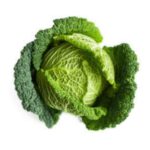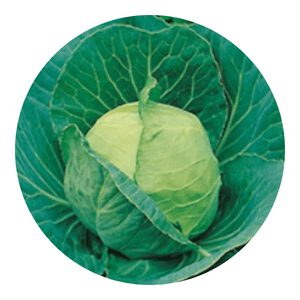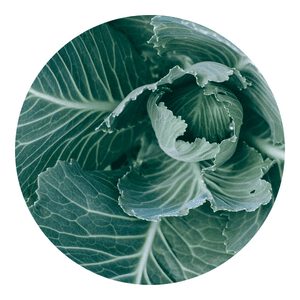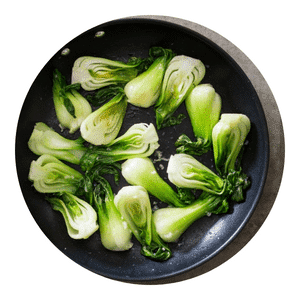How to grow organic Red Cabbage
Organic red cabbage is a delicious and versatile vegetable that can be enjoyed in countless dishes.
It is also incredibly simple to grow at home, with the right resources and knowledge.
Whether you are an experienced gardener or a beginner, this article will provide you with helpful tips for growing organic red cabbage in your own garden.
With these steps, you can learn how to prepare soil, choose plants and seeds, take care of your seedlings, and harvest your crop.

Red Cabbage Menu
Growing Organic Red Cabbage
Organic red cabbage is a highly nutritious vegetable that is a great addition to any garden.
Not only does it have a unique flavor and texture, but it’s also packed with vitamins, minerals, and antioxidants.
Growing organic red cabbage at home can be an easy and rewarding experience for the home gardener.
Red cabbages require full sun exposure and rich soil with ample drainage for optimal growth.
When planting organic red cabbage, it’s important to space seedlings 12-18 inches apart to ensure plenty of space for each head to properly develop.
Keep the soil moist by providing regular watering throughout the growing season as dry soil can stunt growth or result in smaller heads of cabbage.
A simple way to water your plants evenly is by using a soaker hose around each plant or row of plants.
Benefits of Organic Produce
Organic produce is quickly becoming the preferred choice for health-conscious individuals worldwide.
Not only does organic farming help to protect the environment, but it also yields fruits and vegetables that are healthier than their non-organic counterparts.
This article will explain how to grow organic red cabbage and highlight some of its many benefits.
Organically produced food contains fewer toxins and more nutrients than conventionally grown produce.
Red cabbage in particular is an excellent source of antioxidants, vitamins A and C, potassium, calcium, magnesium, iron, dietary fiber and other essential nutrients.
Eating organic red cabbage can aid in digestion by providing probiotics to your gut microbiome.
It can also help reduce inflammation throughout the body due to its high antioxidant content. Additionally, it is rich in Vitamin K which helps to strengthen bone health as well as promote healthy blood clotting.
Planting Red Cabbage
Organically grown red cabbage is a great addition to the garden, especially for those looking to add some variety and color to their vegetable patch.
Growing this vibrant brassica in an organic manner will not only reward you with beautiful homegrown food, but it has numerous other benefits too.
Here’s what you need to know if you want to take on the challenge of planting red cabbage in your own organic garden.
Red cabbage is a cool season crop that prefers temperatures between 55-75 degrees Fahrenheit, making it ideal for spring, late summer or fall gardens.
When selecting a location for planting, choose an area that gets at least 6 hours of sun and has well-draining soil; clay soils are best avoided due to their tendency to retain moisture and encourage root rot.
Soil Requirements
Soil Requirements are one of the key components to growing organic red cabbage successfully.
If you choose to start your own garden, it is important that you know what soil requirements are needed for these vegetables.
Red cabbages require soil high in organic matter and moisture for optimal growth and development.
The ideal pH level should be between 6-6.5; if your soil is more acidic or alkaline, you will need to adjust accordingly by using lime or sulfur products.
The red cabbage also needs a well-drained and loose soil so that water can move through without pooling on top of the surface.
It’s best to add a layer of compost or other nutrient-rich material before planting as this will provide essential minerals and nutrients which are necessary for growth.
A crunchy, red delight, Organically grown for eyes so bright. It brings health and pleasure too, In many forms for us to chew. Added to salads or cooked up real fine, Its perfect for crunchy slaw that tastes divine. Weeds are kept away, organic care each day. Grow organic Red Cabbage the nutritious way!
Chappy The Gardener
Water and Organic Fertilizer Needs
Organic red cabbage is a great addition to any garden.
Growing this vegetable requires knowledge of the water and organic fertilizer needs of the crop.
Knowing these needs will help ensure that your cabbage grows quickly and produces a fantastic crop.
The water requirements for growing organic red cabbage are similar to those for many other vegetables, as it needs about 1 inch of water every week during its growth cycle.
This amount can come from rain or irrigation; however, too much water can cause the plant to become stressed out and produce a lower-quality product.
Additionally, giving too little water can cause stunted growth and weak root systems that are vulnerable to disease or pests.
Organic fertilizers such as composted manure or fish emulsion should also be used while growing organic red cabbage.
Pest Management
Pest management is an important part of growing organic red cabbage.
Without proper pest control, your plants can be ravaged by insects and diseases that can destroy the crop in a matter of days.
To ensure a healthy harvest, you must take steps to protect your plants from these unwelcome visitors.
The first line of defense against pests should be prevention measures like using row covers or floating row covers to keep out insect pests such as cabbage loopers and flea beetles.
Hand-picking off any visible insects is also an effective way to reduce pest populations without having to use chemical pesticides or other treatments.
You can also introduce beneficial predators like ladybugs and lacewings into your garden to help naturally control pests.
Finally, it’s important to inspect your plants regularly for signs of disease or damage caused by insects so you can take corrective action right away if needed.
Harvesting and Storage
Organic red cabbage is a nutritious and delicious vegetable that is easy to grow in any garden.
Harvesting and storing this versatile crop correctly will ensure you have access to healthy, flavorful cabbage all year round.
When harvesting, it’s best to pick the most mature heads of cabbage first – these are usually the largest ones that have developed fully rounded heads.
To do this, cut off the head at the base of the stem with a sharp knife or scissors.
Once you’ve harvested all available heads from your garden, it’s time to store them properly so they remain as fresh as possible.
How long does it take red cabbage to sprout?
Seedlings will typically emerge in about 7 to 12 days.
However, depending on temperature and soil moisture conditions, it can take anywhere from seven days to two weeks for sprouts to appear above ground.
To speed up germination time, soak your seeds overnight before planting them in moist soil and keep them at temperatures between 65°F (18°C) and 75°F (24°C).
Once they have been planted, be sure to provide ample sunlight as well as consistent watering until the plants are fully established.
How To Grow Red Cabbage In A Pot
Organic gardening has become increasingly popular in recent years, and for good reason. Not only does it promote healthy living, but can also provide delicious produce to enjoy all season long.
If you’re looking for the ultimate addition to your home garden, try growing organic red cabbage in a pot!
With just a few simple steps, you can have fresh red cabbage within weeks.
Cabbage is an easy-to-grow vegetable that thrives in cooler weather.
When planting in a pot, make sure the container has enough drainage holes and plenty of nutrient-rich soil.
Make sure to water regularly and keep soil moist during hot days; otherwise the roots may dry out quickly due to lack of air circulation.
Additionally, fertilize every couple of weeks with an organic fertilizer such as compost or fish emulsion to ensure proper growth.
How To Grow Red Cabbage Aquaponics
Organic red cabbage is a popular vegetable due to its sweet and savory flavor, as well as its numerous nutritional benefits.
If you are interested in growing organic red cabbage, but don’t have much space or time, aquaponics may be the perfect solution for you.
Aquaponics combines two types of farming – hydroponics and aquaculture – to create an efficient environment for both fish and vegetables to thrive.
Here’s how to get started with raising organic red cabbage through aquaponics:
Choose a container that is large enough for your desired crop size.
The amount of water in the container should be around 10 cm deep; add fish-safe substrate such as gravel or clay pellets at the bottom of the container.
Place your net pot plants inside and fill them with nutrient-rich water from your tank before adding your seedlings into place.
How To Grow Red Cabbage In A raised Beds
Organic red cabbage is a nutritious and delicious addition to any garden.
For those looking to yield a successful crop, growing in raised beds can be the perfect solution.
Raised beds are ideal for many reasons, including improved drainage, increased space, and easier maintenance.
Here we’ll discuss how to grow organic red cabbage in raised beds the right way.
When selecting where to plant your organic red cabbage, it’s important that the soil is well draining with plenty of nutrients.
The pH level should be between 6-7 and nitrogen levels should differ slightly depending on when you plan on harvesting; if you’re harvesting early then lower nitrogen levels are preferable while higher nitrogen levels are better for later harvests.
For best results, add compost or manure before planting as this will provide additional nutrients for your plants.
How To Grow Red Cabbage Hydroponically
Organic red cabbage is a nutrient-dense and flavorful vegetable that can be grown either in soil or hydroponically.
Hydroponic gardening offers an efficient, space-saving option for cultivating red cabbage year round, regardless of the climate.
It also eliminates the need to till and fertilize soil, making it ideal for those who want to grow their own food without the hassle of traditional gardening.
Here are some tips on how to grow organic red cabbage hydroponically in your own home.
To get started, you will need a hydroponic system such as an aeroponics setup or a deep water culture system.
When using an aeroponics system, use an aeroponics grade nutrient solution and set up your growing medium accordingly.
For deep water culture, use a hydroponics growing medium such as rock wool cubes or hydroton.
Step 1 – Prepare the Growing Medium
Fill your growing container with 2-3 inches of rock wool or hydroton growing medium.
In conclusion,growing organic red cabbage is an economically and environmentally sound choice.
Not only does it offer a variety of health benefits, but it requires little maintenance and can be grown in a variety of climates.
Furthermore, the cost of purchasing organic seedlings or seeds is relatively low compared to the amount of produce that can be harvested over time.
With these benefits in mind, growing your own organic red cabbage should be an easy decision for anyone interested in having a sustainable source of produce that is both delicious and nutritious.
Cabbage Seed FAQ
Cabbage is a leafy vegetable that comes in many different varieties. Some of the most popular types of cabbage to grow organically include:
Savoy Cabbage: This type of cabbage has wrinkled, dark green leaves and a mild flavor. It is often used in salads and slaws.
Red Cabbage: As the name suggests, red cabbage has deep red leaves. It is slightly sweeter than other types of cabbage and is often used in coleslaw or as a garnish.
Bok Choy: Bok choy is a type of Chinese cabbage with white stalks and dark green leaves. It has a mild flavor and is often used in stir-fries or soups.
If you want to grow organic cabbage, it’s important to start with organic seeds. But how can you be sure your seeds are organic? Here are a few things to look for:
1. Check the packaging. If it says “organic” on the label, that’s a good sign.
2. See if the seeds have been certified by a reputable organization like the USDA National Organic Program.
3. Ask your seed supplier if they use any synthetic chemicals or pesticides on their crops. If they do, those chemicals may end up on your seeds as well.
With a little research, you can be confident that you’re getting organic cabbage seeds and giving your plants the best chance to thrive.
Organic cabbage seeds have many benefits that make them a great choice for those looking to grow their own cabbages.
One benefit is that they are not treated with chemicals or pesticides, which can be harmful to both the environment and your health.
Another benefit is that organic seeds are often more disease-resistant than non-organic seeds, meaning you’ll have a better chance of success when growing your cabbage crop.
Finally, organic cabbage seeds tend to be more flavorful than their non-organic counterparts, so you can enjoy a tastier crop of cabbages!
Organic cabbage seeds are available from many different sources.
How can you choose the best organic cabbage seeds for your garden?
There are a few things to consider when choosing organic cabbage seeds.
One is the source of the seeds. If you know someone who has a garden and grows their own cabbage, ask for seeds from them.
This is a good way to get organic seeds that are well-suited to your local area.
Another thing to consider is the type of cabbage you want to grow.
There are many different types of cabbages, such as green, red, and Savoy cabbages.
Finally, make sure to read the seed packet carefully before you purchase it.
Organic cabbage takes about 60 days to mature.
However, it can take up to 80 days in cooler weather.
Cabbage is a cool weather crop and does best when planted in the spring or fall.
It can tolerate some frost, so it is often one of the last crops to be harvested in the fall.
Starting cabbage from seed is a thrifty way to get plants, and it’s also fun to watch the little seedlings grow.
You can start cabbage in pots or in the ground, but if you start them in pots, be sure to harden them off before transplanting them into your garden.
To grow cabbage from seed, first, find an organic cabbage seed that suits your needs.
Then, sow the seeds ¼ inch deep in potting soil or a seed-starting mix.
Be sure to keep the soil moist but not wet and place the pots in a sunny location.
Once the seeds have germinated and grown into seedlings, thin them so that only the strongest plants are left.
Click To Grow
Helps Us Grow – Share If You Like
















